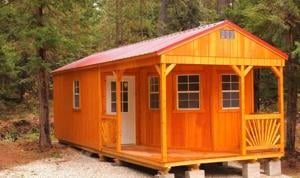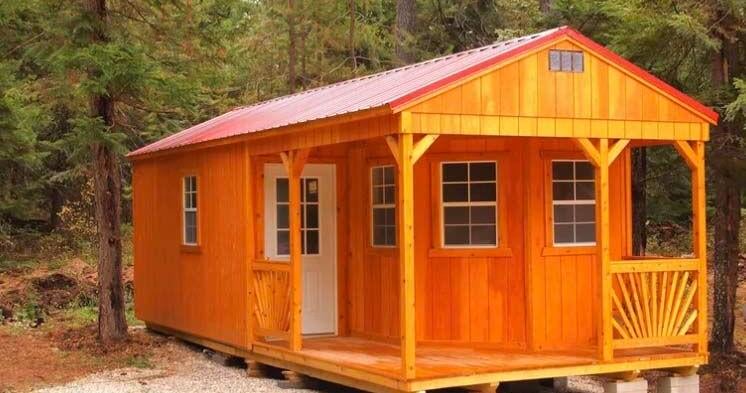
SALT LAKE CITY – Tiny homes are all the rage in the real estate market nowadays.
Here in Utah? Not so much.
A recent nationwide study on the number of homes in each state that can classified as “tiny” – as opposed to merely “small” – found that Utah ranked 14th out of 50 states for the availability of such diminutive residences.
That research by tiny home construction experts at “Clever Tiny Homes” found that Alaska topped the list of 50 states for the availability of tiny homes. Their study found that Alaska had 75 homes listed on the Multiple Listing Service (MLS) that measured from 0 to 500 square feet, out of a total of 2,444 homes listed for a 3.07 percentage.
That may not seem like a lot, but Utah’s ranking in that study was about a tenth of that percentage, with 0.30 percent for 37 homes under 500 square feet out of more than 12,250 homes listed on the MLS.
“Many of the smaller states are featured on our list, which is understandable,” according to Jonathan Palley, the CEO of “Clever Tiny Homes.”
“But some rural states do as well,” he observed. “This could be because homeowners choose to downsize to get more land to use on their lots for other purposes like gardening or farming.”
Knowing what the weather is like in Alaska, however, some homeowners likely couldn’t afford to heat a home bigger than 500 square feet during the winter months.
On the other hand, can you say “cabin fever?”
“Typically, tiny homes are between 100 and 400 square feet,” says Liz Alterman, a communication specialist for Realtor.com.
“While there isn’t a set standard, a tiny house rarely exceeds 500 square feet,” she adds. “Beyond that size, they’re merely small.”
Real estate market observers said that multiple factors fueled the growth of the tiny house movement in the United States in recent years.
As thousands of homeowner faced foreclosure during the 2007-08 financial crisis, many turned to tiny homes as an affordable alternative.
Some tiny homeowners are also looking to shrink their carbon footprint by choosing to live in these energy-efficient residences. Others are just looking for a simpler lifestyle in a smaller space.
Tiny homes are certainly more affordable than so-called “million-dollar mansions.” Their prices can very from as little as $15,000 for a do-it-yourself job with salvaged materials to about $90,000 for a made-to-order home from any of the tiny house construction services that have cropped up in the past 20 years.
But an explosion in the popularity of tiny homes here in Utah isn’t likely.
Experts says that tiny homes are most likely to be suited to singles or young married/unmarried couples who have no children. Utahns of the same age are far more likely to have children, so they’re looking for starter homes.
In a recent study conducted by the U.S. Census Bureau, Utah was also ranked as the fifth worst state in which to find a starter home.
In another study by the real estate website Zillow, Utah was singled out as having six “million-dollar cities” where typical home prices are at least $1 million. Those cities include Granite, Alpine, Park City, Alta, West Mountain and Kamas.
To reverse that trend, Gov. Spencer Cox and Utah lawmakers recently joined forces to pass legislation guaranteeing $155 million in state funds to encourage new starter home construction in Utah with a goal of 33,000 new starter homes by 2028.
For the rare Utah couple who might still be considering moving to a tiny house, Alterman recommends that they test-drive the lifestyle before going all-in.
“An intimate setting can breed a little too much intimacy,” she acknowledges. “Businesses across the country are allowing the curious to rent a tiny house for a night … to determine whether they’re ready to sacrifice the square footage and join this not-at-all-tiny housing trend.”
For additional information about tiny homes, go online to https://clevertinyhomes.com/

